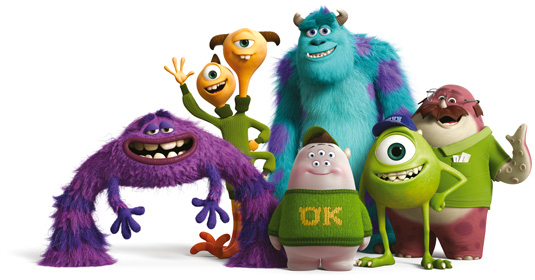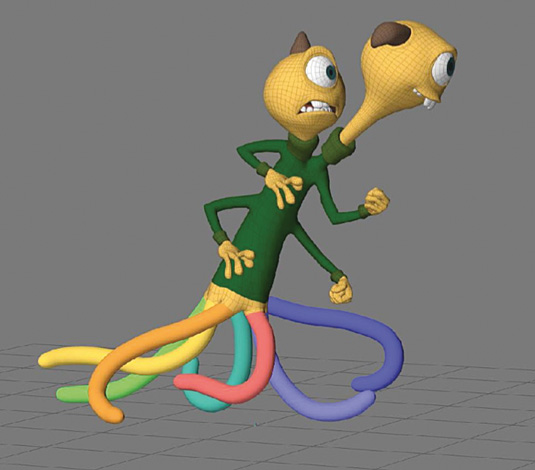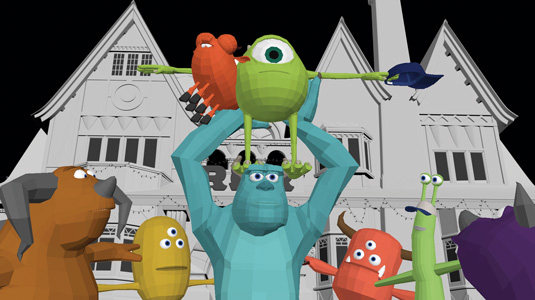Animate like a Pixar Pro: 10 expert tips
Get expert animation advice from Pixar’s directing animators Andrew Gordon and Robb Denovan as they reveal 10 tips and tricks.

The team at Pixar are behind some of the best 3D movies to ever hit the screen. Here, directing animators Andrew Gordon and Robb Denovan share their expertise on what it takes to be a great animator.
01. Do your research
If you're just jumping into a shot, you’re taking a risk. Actors do research and so should animators. Prepare yourself for your work in whatever way suits you. Some prefer drawing, while others do video research. Do whatever works for you and make it a habit.
02. On locomotion
If you have to animate something that you haven’t animated before, break it down into its simple components. For example, on Monsters University, animating the tentacles on Terry-Terri was challenging. We tried to colour-code all his different tentacles to make them easier to see.

03. On workflow
Try to keep your animation playback in real time. The faster you can work, the better you will be able see changes happen. Work with a light model, and use a primitive base to stand in for your complex sets. Leave aside all the complicated stuff that would slow down your scene until the shot is close to completion, then add it in.
04. Use those tools
There are a lot of things that computers and CG software do well.
Make sure that you put your work into the acting and performance, and then let the computer tools help you polish the work to a fine level.
05. Know what to polish
Assess the parts of the scene that really need a high level of finish and spend the time on that aspect of the scene. Prioritise the areas that really need the time and work around that.

06. Show often and early
It’s better to get your work out there rather than hide away animating until you think it’s a perfect time to show it. You really need to put your ego away and be open to an honest critique. It’s very rare that scenes fly under the radar without notes. Animation is a collaboration. You and the director are trying to find the best possible performance for that point in the story, and that process takes time.
Daily design news, reviews, how-tos and more, as picked by the editors.
07. When in doubt, throw it out
Sometimes a scene can get so confused and complicated that I save a recording of my work and the scene file and then start again from the beginning.
Try to use as few controls as possible so you can move from pose to pose with relative ease
I try to use as few controls as possible so I can move from pose to pose with relative ease. Often, animators have overly complicated setups for how they animate. Try to keep things simple.
08. Don't think there is a right way to block
Step key, layering, keyframing, straight ahead - the list goes on. Everyone works differently and, depending on the scene, a shot might be blocked in using different methods. Some scenes require a complex pose; others might just be a pogo stick bouncing around. The point is to not think that there’s a magic bullet for blocking. The trick to remember is that the blocking should be clear.

09. Beg, borrow and steal
When you are working on a production and footage needs to flow, grab anything that might help: walk cycles, face shapes, hand shapes and so on. If you see someone that did a great piece of work, go and talk to them about it, find out what made that scene so great. Some animators will open up other animators’ shots and see how they are doing things. People want to understand how they got to that place.
10. Live life
Let's face it: animation is an acting profession. It’s important to have some life experience to imbue your characters with. Travel, go to see shows, watch people, write down your ideas and record memorable moments. In order to animate well you need to be a great observer.
It's hard, it's painful and most of us who animate would do it for free
You also need to have a certain sense of what makes a scene entertaining. Some animators excel at the funny, others hit the physicality and others are great at the subtle acting; and then you have the guys that can do it all.
But remember this: it’s hard, it’s painful and most of us who animate would do it for free. Seeing that character come to life is still magic.
Words: Andrew Gordon and Robb Denovan
Andrew Gordon joined Pixar in 1997, where he has been an animator on A Bug’s Life, Toy Story 2, Monsters, Inc, The Incredibles, Ratatouille and Finding Nemo. He also teaches at California College of The Arts in Oakland.
Robb Denovan is a character animator at Pixar Animation Studios, whose most recent projects include the Academy Award-winning Brave and Pixar’s most recent animated feature film, Monsters University.
This article originally appeared in 3D World magazine.
Also read:
- Top free 3D models
- Free graphic design software available to you right now!
- Cinema 4D tutorials: great ways to up your 3D skills

The Creative Bloq team is made up of a group of art and design enthusiasts, and has changed and evolved since Creative Bloq began back in 2012. The current website team consists of eight full-time members of staff: Editor Georgia Coggan, Deputy Editor Rosie Hilder, Ecommerce Editor Beren Neale, Senior News Editor Daniel Piper, Editor, Digital Art and 3D Ian Dean, Tech Reviews Editor Erlingur Einarsson, Ecommerce Writer Beth Nicholls and Staff Writer Natalie Fear, as well as a roster of freelancers from around the world. The ImagineFX magazine team also pitch in, ensuring that content from leading digital art publication ImagineFX is represented on Creative Bloq.
